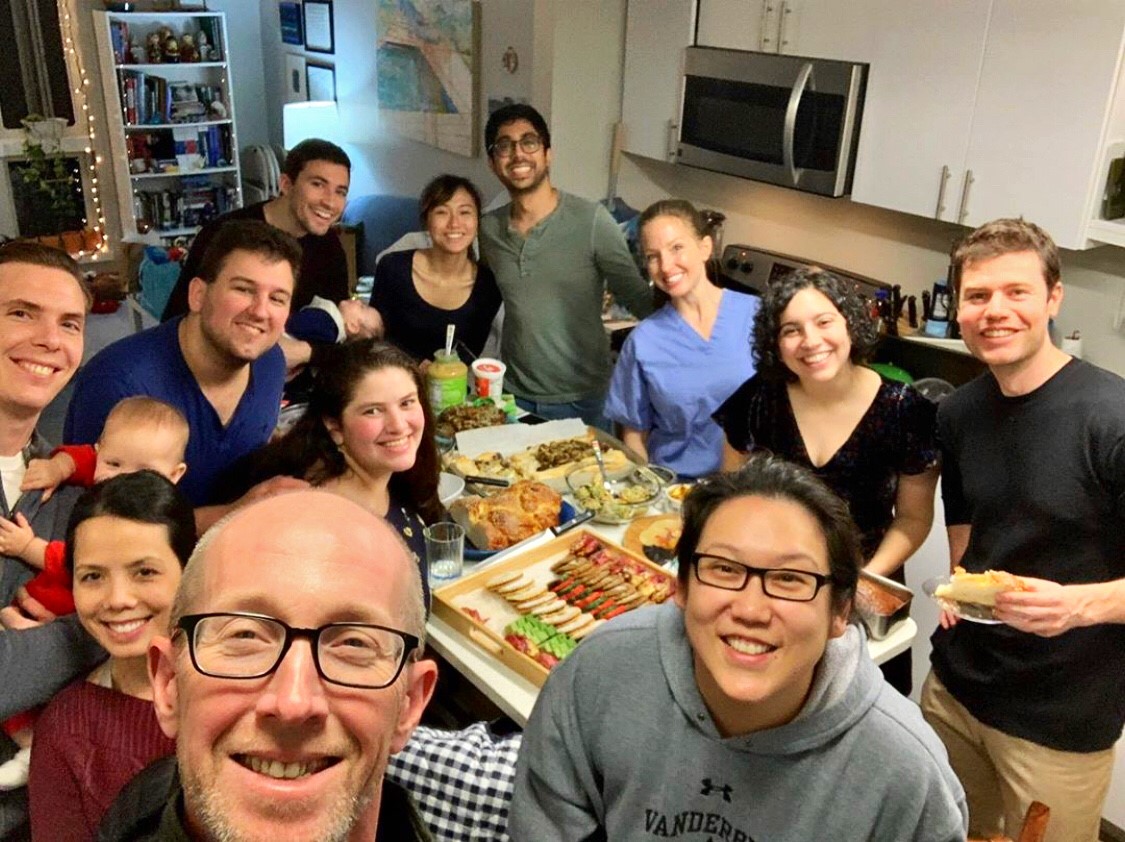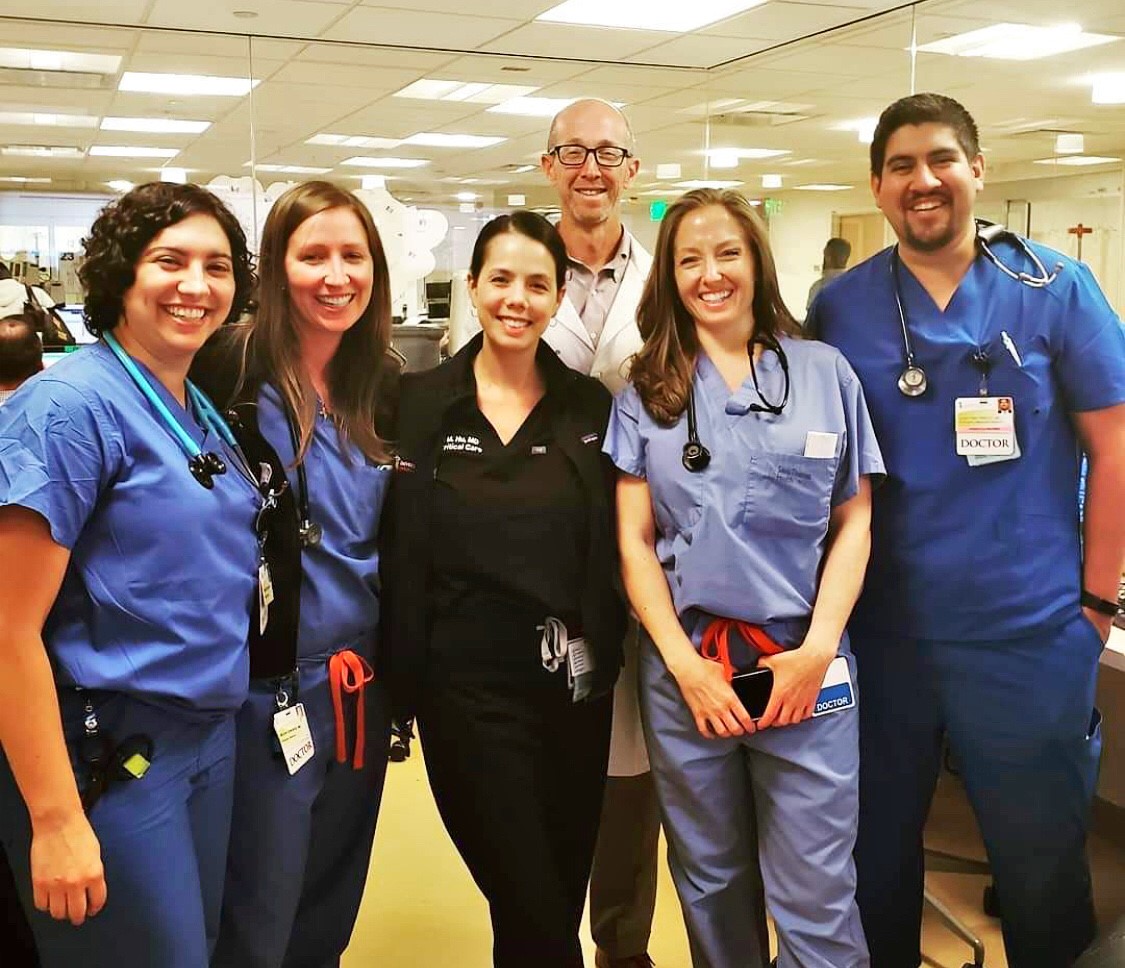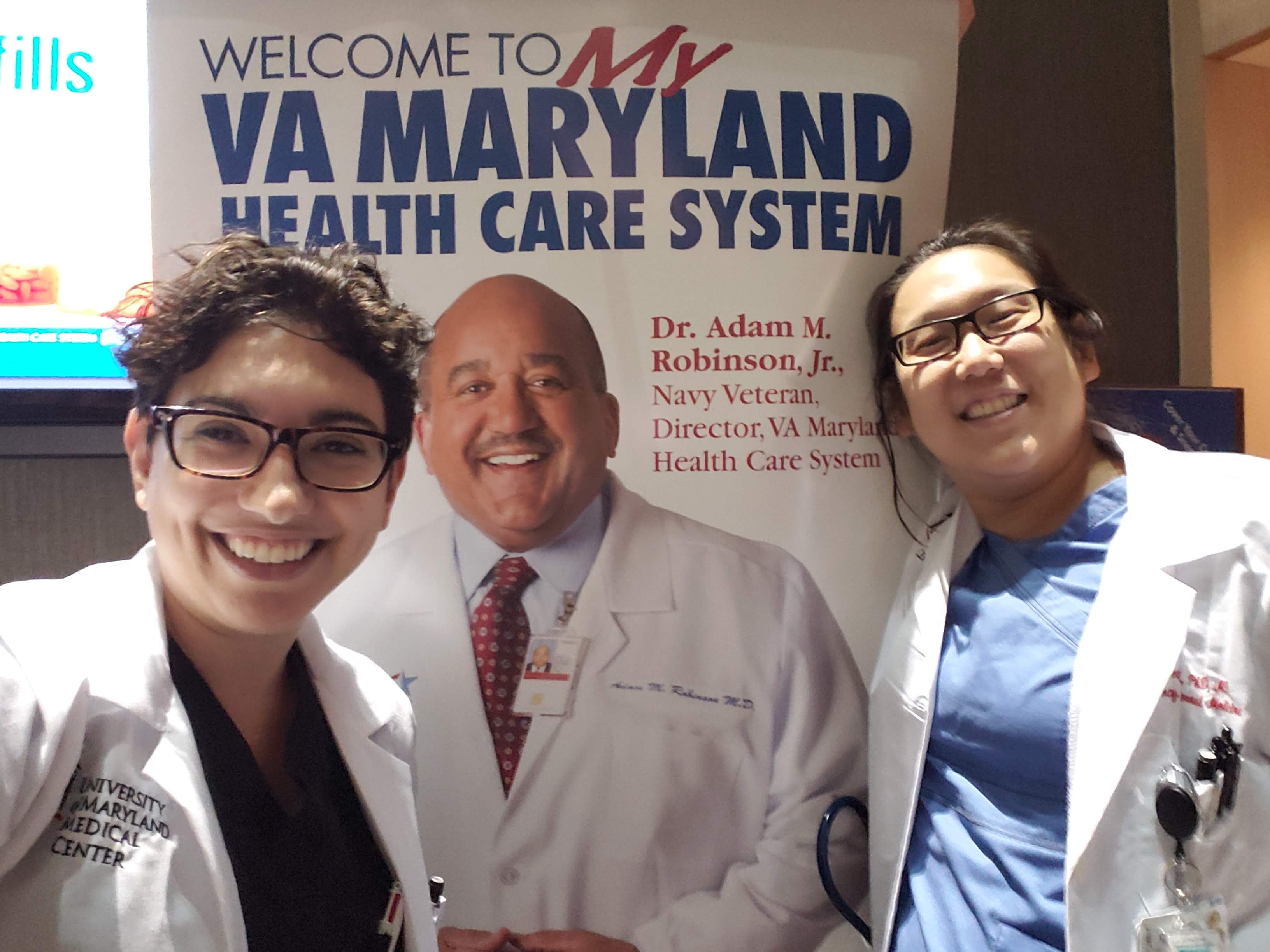.png) |
The Emergency Medicine/Internal Medicine Program (EMIM) at the University of Maryland was approved in 1995 by both the American Board of Emergency Medicine (ABEM) and the American Board of Internal Medicine (ABIM). Our first residents began in July 1996. Since its inception, our EMIM program has been a tremendous success. Recent graduates have quickly become assistant deans, residency program directors, featured speakers at national and international conferences, and recipients of several prestigious national teaching awards. EMIM residents are frequent authors of peer-reviewed publications, active participants in local and national committees, and intimately involved in teaching activities within the School of Medicine. In addition to their academic successes, EMIM residents routinely assume leadership roles on individual rotations, within both parent programs, and within the medical center. We pride ourselves on the reputation of our EMIM residents as amongst the strongest residents and leaders in our medical center.
The Curriculum
Our EMIM curriculum provides a structured and dynamic blend of both disciplines. Each year, the combined curriculum consists of 13 four-week blocks divided into quarterly segments. Both of our new interns typically start with Emergency Medicine to allow them to participate in the new intern lecture series provided by EM. They subsequently alternate between EM and IM, switching roughly every 3-4 months. Over the course of residency an equivalent amount of training is spent under the supervision of both Internal Medicine and Emergency Medicine. During the transition from PGY-3 to PGY-4, residents remain under the supervision of one specialty for approximately 6 months. This provides experience with the seasonal variation in illness, a necessary aspect of the practice of both internal and emergency medicine.
 Our internal medicine curriculum provides a balance between inpatient and outpatient experiences. The inpatient experience is comprimsed of rotations in general internal medicine, subspecialty medicine, and critical care medicine. Approximately 13 months are spent on general medical and subspecialty units. Subspecialty rotations include infectious disease, primary cardiology, and oncology. An additional 2 to 3 months are spent on the night/day float teams. These teams provide general inpatient care and were created to comply with resident duty hour guidelines. Approximately 4 months of training are spent in the medical and cardiac intensive care units to provide critical care experience. Together, inpatient rotations account for 20 of the 30 months spent in internal medicine. University of Maryland Medical Center (UMMC) has a high proportion of underserved and socioeconomically challenged patients and inpatient ward experience, especially in the many of UMMC’s 13 ICUs where our residents rotate, teaches residents how to manage advanced presentations of acute and chronic diseases in a complex population. Our faculty who trained at other institutions frequently comment on the high acuity of our patient population, and we find our graduates are exceedlingly well prepared to manage acute illness at any institution they go to after graduating. Our internal medicine curriculum provides a balance between inpatient and outpatient experiences. The inpatient experience is comprimsed of rotations in general internal medicine, subspecialty medicine, and critical care medicine. Approximately 13 months are spent on general medical and subspecialty units. Subspecialty rotations include infectious disease, primary cardiology, and oncology. An additional 2 to 3 months are spent on the night/day float teams. These teams provide general inpatient care and were created to comply with resident duty hour guidelines. Approximately 4 months of training are spent in the medical and cardiac intensive care units to provide critical care experience. Together, inpatient rotations account for 20 of the 30 months spent in internal medicine. University of Maryland Medical Center (UMMC) has a high proportion of underserved and socioeconomically challenged patients and inpatient ward experience, especially in the many of UMMC’s 13 ICUs where our residents rotate, teaches residents how to manage advanced presentations of acute and chronic diseases in a complex population. Our faculty who trained at other institutions frequently comment on the high acuity of our patient population, and we find our graduates are exceedlingly well prepared to manage acute illness at any institution they go to after graduating.
The outpatient internal medicine experience consists of ambulatory block rotations, continuity clinic, and separate electives in dermatology, endocrinology, rheumatology, neurology and/or other outpatient specialties. During ambulatory block rotations, EMIM residents gain experience in areas such as women’s health, outpatient orthopedics, ophthalmology, geriatrics, rehabilitation medicine, psychiatry, and otolaryngology. During all amenable rotations (e.g. non-ICU), residents are regularly scheduled for half days in continuity clinic at University Health Center (UHC). UHC is very much the extension of UMMC’s complex patient population, and allows residents to learn how to manage both challenging and more bread-and-butter chronic conditions in a primary care setting.
The emergency medicine curriculum of our EMIM program consists of 30 months of rotations in the emergency department, trauma, anesthesiology, obstetrics and gynecology, toxicology, ultrasound, and emergency management services. The emergency department experience covers 15 months in the adult emergency department at University Hospital, Mercy Medical Center, and the Baltimore VA Medical Center. Five months of dedicated pediatric emergency medicine experience is provided through rotations at John’s Hopkin’s Pediatric Emergency Department, two rotations in the pediatric ED at University of Maryland, and 1 month in the University of Maryland pediatric intensive care unit.
A highlight of the emergency medicine curriculum is four rotations at the R Adams Cowley Shock Trauma Center (STC). A renowned trauma hospital to which trainees come from all over the world to learn, by rotating at STC EMIM residents gain invaluable experience in the assessment and management of multi-system trauma victims. EMIM residents are an integral component of the trauma team and work side-by-side with trauma attendings, trauma fellows, surgical residents, and fellow emergency medicine residents. Airway experience is provided through a rotation in anesthesiology during PGY-2, and in this experience our residents learn from world experts in emergency and traumatic airways, intubating not only in the OR but also logging a very high number of intubations in the trauma emergency room and on the inpatient units which provides real world experience similar to ED, ICU, and inpatient crash airway management. EMIM residents typically complete 50-100 intubations during this single rotation and complex airway scenarios such as double setup, cricothyroidotomy, fiberoptic intubation, and digital intubation are fairly frequent occurrences.
 EMIM residents are given 2 months of elective time by each specialty. For emergency medicine, electives are taken during the fourth and/or fifth year of residency; internal medicine electives occur during the first and fifth years. During their elective time, EMIM residents are encouraged to perform research and develop an academic niche. Given the multitudes of avenues open to our broadly trained graduates, EMIM residents are offered a great deal of flexibility in choosing electives that fit their interests and career goals. EMIM residents are given 2 months of elective time by each specialty. For emergency medicine, electives are taken during the fourth and/or fifth year of residency; internal medicine electives occur during the first and fifth years. During their elective time, EMIM residents are encouraged to perform research and develop an academic niche. Given the multitudes of avenues open to our broadly trained graduates, EMIM residents are offered a great deal of flexibility in choosing electives that fit their interests and career goals.
EMIM residents are given progressive responsibility throughout our curriculum. Beginning in PGY-2, EMIM residents manage an inpatient general medical team. Throughout the remainder of their internal medicine training, EMIM residents serve in a senior supervisory role. Senior-level supervision in the emergency department begins in PGY-3. During this year, EMIM residents manage interns, supervise and teach medical students rotating in the emergency department, and are expected to take a leadership role on the team. Our faculty have come to expect greatness from our more seasoned PGY-4, 5, and 6 residents, and they are often viewed akin to junior faculty as they are encouraged to grow into this role.
|